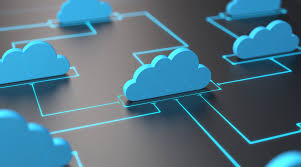
Microsoft Azure Cloud – Azure Certified Solutions Architect Training
🌐 What is Microsoft Azure?
Microsoft Azure is a cloud computing platform from Microsoft, similar to AWS. It provides a wide range of cloud services to build, deploy, and manage applications through Microsoft-managed data centers across the globe.
🚀 Why Use Azure?
Seamless integration with Microsoft products (ideal for businesses using Windows, Office 365, etc.)
Hybrid cloud support: Easily connect on-premises and cloud systems
Scalable and flexible infrastructure on demand
Highly secure and compliant, trusted by governments and large enterprises
Pay-as-you-go pricing model for cost efficiency
👥 Who Uses Azure?
Enterprises running Windows Server or .NET-based applications
Organizations leveraging hybrid cloud infrastructure
Companies adopting AI, ML, or data analytics
Developers hosting web, mobile, or API-based apps
✅ Real-World Use Cases
BMW: Uses Azure for autonomous driving simulations
Adobe: Delivers Creative Cloud through Azure
Government agencies: Rely on Azure for secure infrastructure
Microsoft Cloud Course Contents (Implementing Solutions on Microsoft Cloud Platform) (AZ-900/AZ-104/AZ-303)
Course Duration: 2. months
Fees: ₹10,000 (Includes Linux Basics + Azure Admin)
🔧 Module 1: Linux Basics (10 Days)
☁️ Module 2: Azure Administration (2 Months)
1. Introduction to
● Cloud technology overview
● Overview of Cloud
● Managing Cloud with the portal
● Managing Cloud with Windows PowerShell
● Overview of Cloud Resource Manager
2. Implementing and managing Cloud networking
● Implementing and managing virtual networks
● Configuring virtual networks
● Configuring virtual network connectivity
● Configuring the Subnets
● Configuring Virtual Network Region Peering
● Configuring Virtual Network Global Peering
● Understanding Cloud to On-Prem Connectivity
● Deploying Virtual Network Gateway.
● Understanding User Defined Routes(UDR).
● Configuring Virtual Network Gateway with AWS over IPSec VPN.
3. Understanding and Configuring Network Security Groups(NSG)
● Understanding Network Security Groups(NSG)
● Creating and Updating Inbound & Outbound Security Rules.
● Understanding NSG Rule Hierarchy.
● Testing Network Security Groups and learning rule priority.
● Creating NSG Rules with Service tags.
● Understanding Application Security Groups (ASG).
● Creating NSG with Application Security Groups.
4. Understanding and Configuring Firewall
● Creating UDR and Cloud Firewall Subnet.
● Deploy Firewall.
● Configure routing on UDR and assigning to subnets.
● Create Network Rule Collection and check the traffic.
● Create Application Rule Collection and block traffic to websites.
● Understand SNAT and DNAT in Azure Firewall.
● Creating DNAT for Virtual machine using Azure Firewall.
5. Configuring Virtual Machines
● Deploy virtual machines in portal
● Deploy virtual machines using CLI
● Managing Virtual machine storage
6. Designing & Implementing Load Balancing
● Type of Load Balancers in Cloud
● Basic Vs Standard Load Balancer
● Deploying Basic Load Balancer
● Configuring NAT using Basic Load Balancer.
7. Implement and configure DNS & amp; Standard Load Balancer
● Purchasing domain name for Godaddy.com
● Creating DNS Zone and configuring it with Godaddy.
● Creating 3 Availability Sets and placing a single virtual machine in each AV-
Set.
● Create Standard Load Balancer and create a backend pool and assign
all the 3 AVSets.
● Check the Load Balancing between the servers in different AV-Sets.
8. Application gateway
● Understanding Application Gateway architecture.
● Understanding Path Based Routing in AGW.
● Creating multiple VMs and configuring application gateway.
● Configuring the SSL Off-loading on Application gateway.
● Check pathing based routing using AGW.
9. Auto Scaling
● Understanding Auto Scaling
● Creating a VM Image for Auto Scaling
10. Planning and implementing Storage
● Understand Blob Storage
● Understand File Shares
● Configuring File Sync
● Manage Storage permissions
● Static Website deployment
● Custom domains
11. Configure and Manage Backup and Disaster Recovery Services
● Backup VMware Servers to Cloud
● Backup VM SQL instances
● Replication and failover groups
● Disaster recovery vault configuration
12. Planning and implementing SQL Database
● SQL database(PaaS) vs SQL database (IaaS)
● Structured vs Unstructured data
● MySQL Deployment
13. Implementing App services
● Web Apps overview ( PaaS)
● Deploying and Managing Web Apps
● Azure App Service and Deployment plan
● Azure Deployment slots
● App Service Security
14. Implementing Active Directory
● Domain services.
● Deploy and configure Active directory.
● Create and manage users and groups.
● Extending On-premise Active directory to Cloud.
● Configure domain users and groups to access Azure portal.
15. Implementing Azure-based management and automation
● Implementing Automation.
● Managing Automation.
16. Designing and developing apps for Containers
● Virtual Machine vs Containers.
● Install and configure Docker Engine.
● Deploy and manage Containers.
● Deploying container images using Container Instances(ACI).
● Introduction to Kubernetes Services(AKS).
● Creating AKS Cluster.
● Deploying application on AKS.
17. Configure Diagnostics, Monitoring, and Analytics
● Azure Monitoring and alerts configuration.
● Log analytics.
● Insights virtual machines and network.
● Insights applications and containers.
18. Migrate projects and customer billing optimization
● Migration projects.
● Recovery services vaults.
● Database migration services.
● cost calculator.
● price optimization.
19. NAT Gateway CDN WAF
● Deploy NAT Gateway for Private Subnets.
● Deploying CDN for Web Applications.
● Deploy Web Application Firewall for Securing Web Applications.
20. Introduction to Infrastructure as a Code(IaaC)
● Understanding JSON files.
● Introduction Resource Manager Templates(ARM).
● Deploying ARM Templates from Powershell & Portal.
● Using ARM Functions and Dry Run with Powershell 7.0
● Working with ARM Template Modes.
● Deploy basic Infrastructure with Terraform
AZURE Cloud Training at Learn Tech Masters
Master cloud computing with our industry-focused AZURE training program at Learn Tech Masters. Designed for IT professionals and beginners alike, this course covers key services like virtual machines, storage, networking, and security. Gain real-time experience through labs and projects, and prepare for Microsoft certifications with confidence in AZURE technologies.
Looking for Reading Material? Click here
